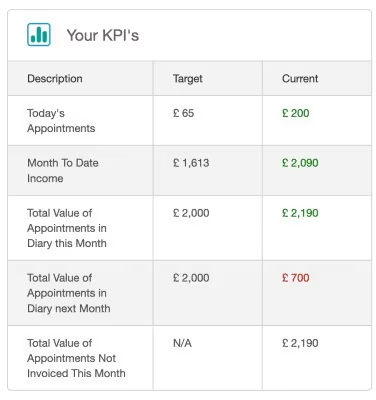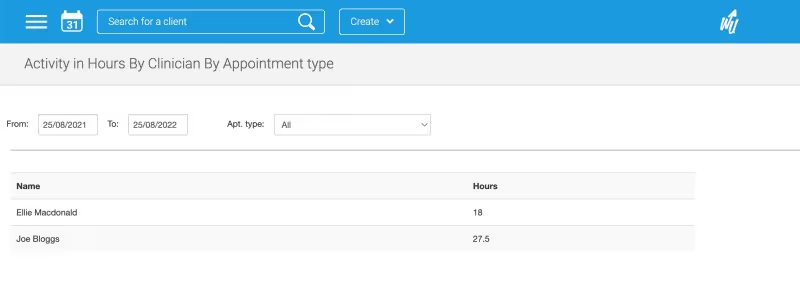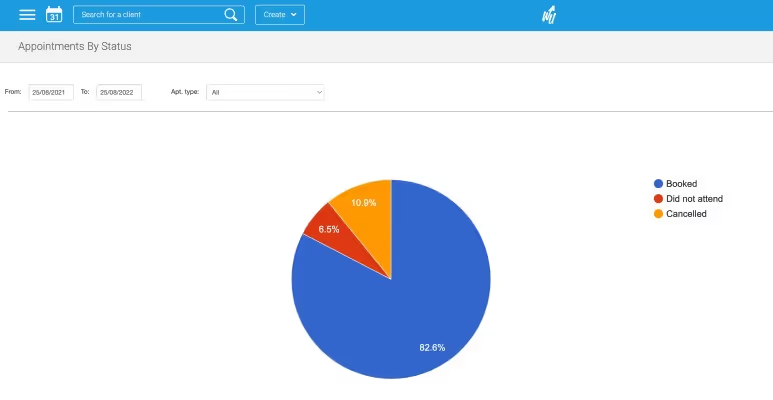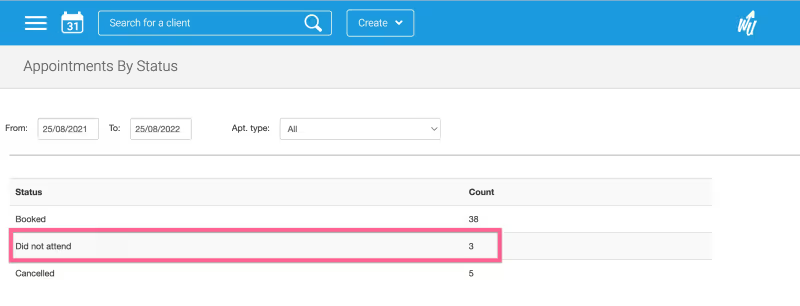As a private practice owner, one of your biggest challenges is to ensure that your patients receive the best care while maintaining profitability.To stay on top of your goals, you need to consider finances, operation, staffing, services, scheduling, and other factors of running a successful private practice.Enter healthcare Key Performance Indicators (KPIs).These super metrics measure trends in how well your practice reaches specific business and financial goals.KPIs offer you information in the form of usable data.For instance, you may be aware of how often patients don't show up for appointments each day, but do you know the week-over-week or month-over-month patient no-show rate and how your private practice compares with others?KPIs provide a simple differentiator between data you know and information you can use to make better decisions.Understanding KPIs is a critical consideration in monitoring the health of a practice, finding improvement areas, and making intelligent decisions.And thankfully, you can use practice management software to help you track and optimise your private practice's performance rather than doing it all yourself.
What are Healthcare KPIs?
Clinicians have long kept paper records of patient information. But this record-keeping method is now outdated: 89.9% of office-based healthcare providers have shifted to keeping electronic health records.Keeping patient data secure isn't the only reason healthcare providers take their practices online – it also helps them analyse their practice's performance. This is possible by transforming patient information into Key Performance Indicators or measurable metrics to evaluate, analyse and optimise the quality of services provided by their practice.KPIs can allow you to:
- increase profitability
- improve performance
- ensure patient satisfaction
Using healthcare KPIs can also improve clinician and patient satisfaction.
Why Your Business Should Monitor Healthcare KPIs
Instead of using paper files, patient records and charts are now input into clinic management software which limits the amount of lost patient information and allows clinicians to access patients' files in a central location easily.While this digital transformation makes things easier for private practice owners and creates better quality care, it also delivers a quantitative analysis of your operational performance. You can extract patient data and transform it into healthcare KPIs that can be measured and monitored.And like any business, healthcare professionals must consider the quality of their services, resources, and patients' needs. This can be challenging if you aren't tracking and monitoring your facility's performance with healthcare KPIs.Without key metrics, you may not know which areas need adjustment or how to improve your practice's performance.By evaluating the care you provide from when a patient steps into your facility to when they leave, healthcare metrics can enable you to:
- measure the effectiveness of your practice
- identify areas that need improvement
- enhance patient experience and satisfaction
- ensure you're utilising your resources in the most optimal way
- reduce costs
What KPIs Should Healthcare Practices Monitor?
There are several KPI options, which vary depending on the type of practice you operate, your business goals, and your stage of business growth. There are some KPIs, however, that almost all healthcare practices should track regularly:
Strategic Metrics
These big-picture key performance indicators measure organisational goals. Clinicians typically check one or multiple strategic KPIs to gauge how the organisation is doing at any specific time, like month-to-date income or the value of appointments in any given month. Income numbers are usually the most crucial metric for any business type, and health practices are no exceptionKPI metrics in your WriteUpp dashboard:

You might also want to analyse profitability for each practitioner individually as well as track income for the clinic overall:

Operational Metrics
Operational KPIs focus on the performance of the practice itself. Improving operational metrics will help your practice increase efficiency and, in turn, optimise operating costs and increase patient satisfaction. Some examples of operational metrics include:Clinician utilisation: This statistic is really important as it is an indicator of a clinician’s caseload. Setting targets for this metric should be based on your own experiences with the services you provide. Each practitioner's weekly availability should be compared with these figures.

Appointments booked: This measure tells you information about how well your practice is going from a client’s perspective. Having a lot of appointments booked suggests that clients are satisfied with your practice's ability to meet their health needs. You should view these in the context of the revenue generated. Low revenues may be caused by a change in the mix of appointment types, a shorter appointment length, or an adjustment in pricing:

No-shows: No-shows are expensive for practices, not just financially, but for the well-being of your clinicians. Additionally, they can indicate a client's motivation and engagement. You have probably reduced these substantially if you use automated appointment reminders. Despite this, they are still worth tracking for health practices:

New clients: If you're gaining new clients due to your marketing efforts or referral networks, then you're doing something right! If you aren't getting a steady flow of new clients through the door, your practice would need to maintain 100% retention to remain at the same level, which just isn’t sustainable:

Outstanding invoices: Your outstanding invoices have a huge impact on cash flow. If your outstanding invoices are creeping upwards, especially your overdue invoices, this indicates you need to improve your collection methods and follow up on overdue invoices:

Care Quality Metrics
Quality of care metrics is essential for two reasons. When a patient gets high-quality care, there is a lower chance of readmission and a higher patient satisfaction rate. Here are some top care quality metrics to monitor:
- Staff-to-patient ratio: You can calculate this by dividing the total number of patients by the total number of clinicians in your practice. The KPI measures the ratio of patients and care providers. It allows you to improve your practice quality, efficiency, and patient satisfaction by addressing issues related to over or under-staffing.
- Patient follow-up rate: This metric measures the number of patients who get a follow-up after their visit to your practice.
- Overall patient satisfaction rate: This is one of the most critical healthcare metrics in measuring the quality of your services. Low patient satisfaction means your practice isn't providing proper care, and you may lose clients and profit. A high score indicates that your services are top-notch, which can help you market and attract new and repeat patients. Make sure that you ask your patients to fill in a survey after an appointment with you so that you can keep on top of this.
Patient Acquisition and Retention KPIs
Finally, to maintain an existing patient base, the best way to operate a thriving private practice is to attract new patients and ensure they keep coming back.Having an eye on new patients, lead conversion, patient volume, and overall patient satisfaction can help you get a clear sight of how you are performing as well as meeting growth goals if you consider the following:
- Total number of year-over-year patients
- New patient appointments
- Return patient appointments per month
- Conversion percentage into a new patient appointment
- Patient satisfaction rates
- Patient attrition rates
How WriteUpp Can Streamline Your KPI Monitoring
The key measures for a thriving private practice are not different from any other business. Try not to get stuck in analysis-paralysis: spending so much time thinking through choices and ending up not coming to any decision at all.Focus on tracking metrics that you can genuinely action, and don’t overwhelm yourself. It's about keeping records of numbers that can provide you with an easy overview of your practice trends and knowing how to use those numbers to make intelligent business decisions.Healthcare facilities are often busy places. Staff members are often struggling to handle all the work they have. So why not make things easier for them?At WriteUpp, we have created industry-leading practice management software that can make KPI tracking and monitoring a breeze and improve your practice's performance. Sign up for a free 30-day trial, or grab us for a chat by clicking on the icon in the bottom right-hand corner.



Join over 50,000 clinicians that we've helped using WriteUpp
Start my free trial




.png)


